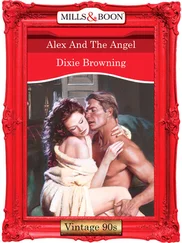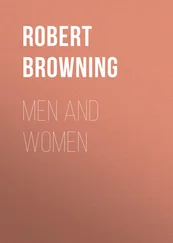Less than a week later, Bennett set out for Ogden with the intention of buying the Browning and all rights to it because it was, he admitted, the best single-shot rifle he had ever seen. He was clearly puzzled when he arrived at the Browning shop, for the seven people working there appeared little more than youths, but when he had established that he was in the right place, he lost no time in coming to the point.
Bennett and John Browning hardly haggled. Bennett was certainly aware that the tall young man standing before him was something of a prodigy and was prepared to pay almost whatever it cost to secure the rifle and a first option on the high-power repeater John had told him was coming. John was eager to sell, to raise sufficient funds to support the family business so that he could devote more of his time to inventing, and after a brief consultation with Matt, he asked the sum of ten thousand dollars. Bennett proposed eight thousand and offered to include the Brownings on the Winchester jobbing list, and made the offer conditional upon the new repeater being offered to Winchester first.
John accepted the terms and a cheque for one thousand dollars, and the agreement was formalized in two brief notes written out on the counter of the shop, after which Bennett returned to New Haven. The balance of seven thousand dollars followed in about a month, after Bennett had satisfied himself about the validity and protection of the Browning patent.
A persistent story is that Winchester also bought up the original production run of the weapon. This was manifestly not the case, as there would have been no more than a dozen rifles in the store on the day Bennett called. What did happen illustrates clearly John’s lack of business knowledge. Faced with both a steady demand for the single-shot and a good stock of parts, the Brownings continued turning out the rifle themselves, not realising that in selling the rights to the weapon to Winchester they had also deprived themselves of the right to manufacture it. The production was finally stopped after John received a letter from Bennett, but not before the entire stock of parts had been utilized.
Winchester introduced the Browning single-shot rifle in 1885, and it continued in production for thirty-five years in calibres from .22 right up to the extremely powerful .50/95 Winchester Express. It was a highly successful weapon, very popular with hunters, and extremely accurate and reliable. The locking system in particular proved immensely tough, even when the rifle was grossly over-stressed. Its success was marked by the gradual demise of all the other single-shot rifles on the American market, and it was only discontinued by Winchester in 1920 because of the increasing popularity of repeating arms, most of which were also Browning designs.
6. EARLY RIFLE DEVELOPMENT
In May 1884 John Browning applied for a patent for his new repeating rifle, and this was granted in October of that year. As if to prove his versatility, during the summer of 1884 he occupied himself in designing another rifle of the same type, but with a completely different operating mechanism.
Bennett had insisted on being the first manufacturer to see the new Browning model, so after the granting of the patent John and Matt set off to New Haven, John carrying the repeater wrapped in brown paper. In New York City the Brownings were entertained by a salesman from Schoverling, Daly and Gales, a man they knew well from his visits to Ogden and whose familiarity with guns they respected. After seeing the sights, eating a good meal and downing several drinks, they returned to the hotel where John showed him the new repeater. To say the salesman was impressed would be an understatement. It was, he declared, not only the best rifle in the world, but also probably the key to the future of the Winchester Company.
Bennett, when the Browning brothers saw him at New Haven shortly afterwards, agreed and purchased the patent outright from John for a reputed fifty thousand dollars, a quite enormous sum of money in 1884. But his faith was justified, for the 1886 Winchester, which became known as the Model 71 in 1936, remained in production for seventy one years, selling over 200,000 units, and incidentally, like the later Models 1892 and 1894, becoming familiar the world over from its appearances in countless western films. Indeed, the weapon is still very popular even today, despite production having ceased in 1957.
As well as buying the 1886, Bennett also asked John if he could design a lever-action repeating shotgun. John replied that he could, but suggested that a slide-action weapon might be preferable, adding that he had already designed such a gun. Bennett was interested, but pressed John to design a lever-action, as that feature had virtually become a Winchester trade-mark. He then asked roughly how long such a gun would take to design, and suggested two years, but John thought he could work a bit faster than that. That conversation took place in October 1884, and the patent on the new gun was filed in June 1885.
Winchester bought the design and introduced the weapon as the Model 1887. It had a simple, rugged and reliable action, and proved to be the world’s first successful repeating shotgun. It remained in production, though with a minor model change to the Model 1901 at the turn of the century to enable it to handle smokeless powders, until 1920, by which time over 78,000 had been sold.
It is instructive to realize that, due entirely to Bennett’s visit to Ogden in 1883, Winchester was able to introduce three entirely new weapons in a three year period, all of which went on to become market leaders in their classes and all were solely the product of John Browning’s genius. When the Model 87 went on sale, he was still only thirty-two years old.
Like Jonathan Browning, John was a Mormon and despite what he knew was his true vocation — designing weapons — he also accepted that he had commitments to the church. In 1887 was sent as a missionary to the southern states for two years, returning in March 1889. But by 1887 his head was already buzzing with new and exciting ideas for firearm designs, and there is no doubt that his eagerness to continue inventing and developing weapons contrasted sharply with his religious duties and beliefs. But he did his duty and went as a missionary, though after his return it is perhaps significant that he never again took an active role in church activities, limiting his participation to occasionally accompanying his wife Rachel to services. Almost certainly he regarded those two years as a complete waste of his time.
Upon his return, John Browning threw himself into his work with renewed vigour. An indication of his enthusiasm is that twenty patents were granted to him in just over three years. His method of working was rather unusual. By then he did not use blueprints, or even produce drawings, of the designs he was developing. Instead he would ‘assemble’ the mechanism in his head, and only start making templates or parts when he was certain that it would work smoothly and correctly.
Once a model had been constructed, he would take it into the hills around Ogden and test-fire dozens of rounds, noting critically the way the weapon behaved. Then he would sit at home after supper, loading the piece and working the action, noting any roughness or irregularity. The next morning Ed would find John in the shop, the gun stripped on the bench in front of him, while he filed, fingered or just considered a part. With any minor modifications made, the test-firing would begin again, and the process continued until he was sure the gun was right in every respect.
And then there were the trips out east to Winchester at New Haven, where John would show the gun or guns he had produced. And, invariably, T G Bennett would buy the weapons, usually with little haggling over the price, though John quite often accepted Winchester goods in part-payment. These the Browning brothers sold through their new and very much larger two-storey shop in Main Street, Ogden, where the business was booming.
Читать дальше












